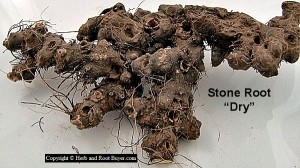Stone Root – collinsonia canadensis
|
Current Demand = Normal |
Parts Used: Root |
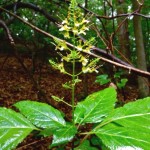 |
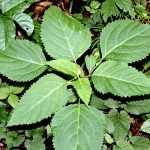 |
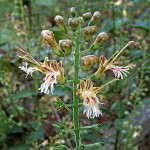 |
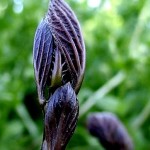 |
Family: Lamiaceae
Common Names: stone root, canada horsebalm, richweed, hardhack, heal-all, horseweed, ox-balm…
Description:
Stone Root grows in North America, the plant has a four sided stem that grows from 1-4 feet and bears large, greenish-yellow flowers. The whole plant has a strong odor and a pungent, spicy taste. Stone root is a perennial herb growing up to 4 feet tall, with a single, erect, square stem. Oval, toothed leaves grow in opposite pairs along the stem, which culminates in a cone-shaped, branched cluster of small, tubular, light yellow flowers (July-September).
The flowers have a strong lemony smell. Even the fresh root of this plant is very hard. It is horizontal, large, thick, and woody, and the upper side is rough and knotty and branched irregularly. The odor of the root is rather disagreeable, and the taste pungent and spicy. In the fresh state, as well as when dry, the root is extremely hard, whence the common name “stone root.”
Harvesting/Drying:
Parts Used: root
For maximum potency Stone root should be harvested in the late summer and fall. The dried root is grayish brown externally, irregularly knotty on the upper surface from the remains of branches and the scars left by former stems and the lower surface showing a few thin roots. The inside of the root is hard and whitish.
Most times, only the plants roots have market value although occasionally buyers will purchase freshly dug whole plants. Gather the larger more mature plants leaving plenty of younger smaller plants to seed the area for future harvest.
Stone root is considered an endangered species in the State of Wisconsin and should not be gathered unless the land is under development where it would otherwise be destroyed. Contact your local Department of Agriculture prior to harvesting in Wisconsin.
After harvest, the roots should be washed in cold water and all foreign matter (rocks, dirt and other roots) must be removed. Unless your buyer is purchasing fresh dug roots (which they often do) the clean roots need to be dried. Large roots may need to be broken in half or chopped into two to three inch pieces to aid in drying. Stone root can be dried in the sun although if possible dry indoors in a well ventilated barn loft or attic to protect against the elements. If natural heat is not available you may need to add heat and a fan for continuous airflow.
The key to drying any root, herb or bark in an even combination of heat and airflow. Never use an oven or microwave.
The root will be completely dry (largest stem will snap not bend) in 5-10 days depending on the size of the root and the drying conditions. Place the root carefully into a cardboard box or paper bag for storage in a dry area until you are ready to sell or use. Do not store the roots in plastic or it will mold.
Planting/Cultivation:
Growing region: Stone root can be found in the Eastern United States and Canada. It is common thru-out the Midwest to Kansas and the Appalachian mountains. It can be found in rich moist woods in thickets out of direct sunlight and often along timber trails and shady ravines.
The flowers are hermaphrodite (has both male and female organs) and are pollinated by Insects. The plant prefers light (sandy) and medium (loamy) soils. The plant prefers acid, neutral and basic (alkaline) soils. It can grow in semi-shade (light woodland). It requires moist or wet soil.
Propagation:
Seed: best sown as soon as it is ripe in a cold frame. The seed can also be sown in the spring, though it might be slower to germinate. Prick out the seedlings into individual pots when they are large enough to handle and grow them on in light shade in a greenhouse or cold frame. Plant them out in spring or early summer of their sec
Attributes (Images)
By Fritzflohrreynolds (Own work) [CC BY-SA 3.0], via Wikimedia Commons
By R. A. Nonenmacher (Own work) [CC BY-SA 4.0], via Wikimedia Commons
 Root Buyer
Root Buyer